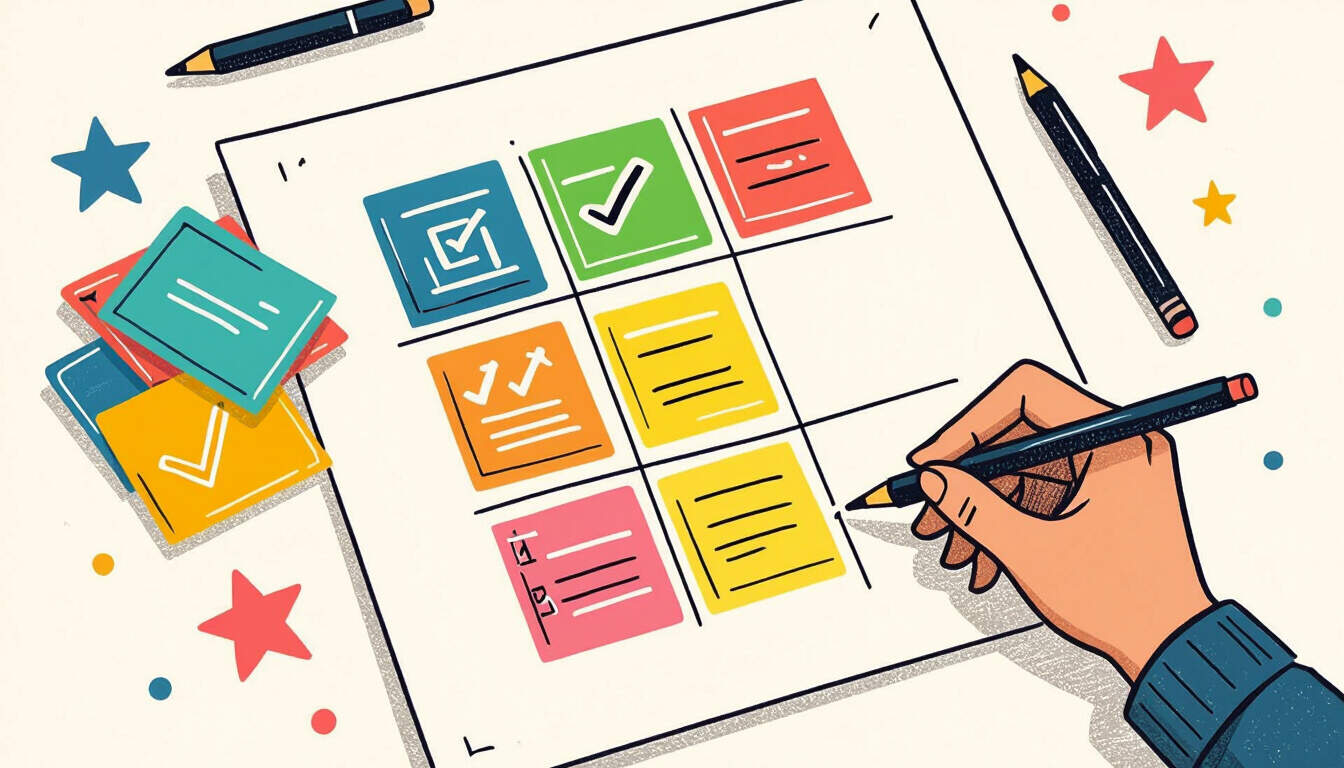Practical Applications of Priority Matrices for Enhanced Productivity
 by Thaddeus Blanda
by Thaddeus Blanda
Discover how priority matrices serve as essential tools for organizing tasks and improving focus. This article explores real-world uses for professionals and students, integrating strategies like hyperfocus and time blocking to boost efficiency and achieve goals effectively.

Priority matrices offer a straightforward way to sort tasks based on urgency and importance. This approach helps individuals make better decisions about where to focus their efforts. For busy professionals, applying a priority matrix means identifying key tasks that drive results.
What is a Priority Matrix?
A priority matrix is a simple grid that categorizes tasks into different levels. It typically divides items into four quadrants based on two factors: urgency and importance. The first quadrant includes tasks that are both urgent and important, demanding immediate attention. The second covers important but not urgent tasks, which contribute to long-term goals. The third quadrant deals with urgent but less important items, often distractions in disguise. Finally, the fourth quadrant holds tasks that are neither urgent nor important, which can often be eliminated. By using this grid, people can visualize their workload and allocate time more effectively. For students juggling classes and assignments, a priority matrix provides clarity on what needs to be done first.
Integrating with Hyperfocus Techniques
Hyperfocus involves concentrating deeply on a single task to achieve high productivity. When combined with a priority matrix, this technique becomes even more powerful. Start by reviewing your matrix to select a task from the most critical quadrant. Once chosen, set aside a dedicated block of time to work on it without interruptions. This method allows for intense concentration, leading to better outcomes. Imagine a professional preparing for a project deadline; by picking the top priority item and applying hyperfocus, they can complete it efficiently. Over time, this practice builds momentum and reduces stress from overwhelming to-do lists.
Combining with Time Blocking Methods
Time blocking is another effective strategy that pairs well with priority matrices. This involves scheduling specific periods in your day for particular tasks. Begin by filling your calendar with items from your matrix, starting with the urgent and important ones. For example, block out the morning for high-priority work, ensuring you tackle it when your energy is highest. In the afternoon, address less critical tasks. Students might use time blocking to allocate hours for studying key subjects identified in their matrix, making study sessions more productive and balanced.
Real-World Applications for Professionals
In a work setting, priority matrices help manage daily responsibilities. A marketing specialist might use one to prioritize campaign launches over routine emails. By doing so, they ensure that strategic initiatives receive the attention they deserve. This tool also aids in team collaboration. During meetings, sharing a priority matrix can align everyone on what matters most, fostering a more efficient environment. Professionals often find that regular use of this system leads to fewer missed deadlines and higher job satisfaction.
Benefits for Students
Students face unique challenges with multiple deadlines and extracurricular activities. A priority matrix assists in organizing assignments and exams. For instance, an upcoming test might fall into the urgent and important category, prompting immediate preparation. By applying this tool, students can avoid last-minute cramming and maintain a steady study routine. It encourages a proactive mindset, where preparation happens in advance, leading to improved grades and less anxiety.
Step-by-Step Guide to Creating and Using a Priority Matrix
To get started, gather your tasks in one place, such as a notebook or digital app. Then, draw a simple 2x2 grid. Label the axes as urgency on one side and importance on the other.
- List all tasks in the appropriate quadrants.
- Focus on quadrant one first.
- Schedule time for quadrant two activities.
- Delegate or postpone quadrant three items.
- Eliminate quadrant four tasks if possible. Once set up, review and update your matrix weekly. This keeps it relevant and adaptable to changing circumstances.
Overcoming Common Challenges
Sometimes, deciding where a task fits can be tricky. If you're unsure, ask yourself if it aligns with your goals. Over time, with practice, this becomes easier. Another challenge is sticking to the plan; combining it with hyperfocus sessions can help maintain commitment. For those with packed schedules, start small by applying the matrix to just one area of life, like work or studies. Gradually expand its use to see full benefits.
Measuring Success and Making Adjustments
Track your progress by noting how often you complete high-priority tasks on time. Keep a journal of your matrix usage and reflect on what worked well. If certain tasks keep slipping, reassess their placement in the matrix. Adjustments ensure the tool remains useful. Over weeks, you might notice patterns, such as certain tasks always being urgent, signaling a need for better planning.
Final Thoughts
Incorporating priority matrices into your routine can transform how you handle time and tasks. By linking it with strategies like hyperfocus and time blocking, you create a solid foundation for productivity. Whether you're a professional aiming for career growth or a student seeking academic success, this approach offers practical steps to achieve more with less effort.
